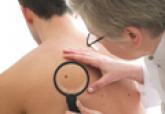Original Research

Physician Skin Examinations for Melanoma Screening
A variety of estimates of the value and impact of physician skin examinations (PSEs) in screening for melanoma have been published. Although...
From the School of Medicine, University of Pittsburgh, Pennsylvania. Dr. Kirkwood is from the Department of Medicine, Division of Hematology/Oncology. Dr. Ferris is from the Department of Dermatology.
The authors report no conflict of interest.
Correspondence: Laura K. Ferris, MD, PhD, University of Pittsburgh, Department of Dermatology, 3601 Fifth Ave, 5th Floor, Pittsburgh, PA 15213 (ferrislk@upmc.edu).

There is abundant anecdotal evidence of the value of skin cancer screening; however, population-based screening performed exclusively by dermatologists is not practical. As health care payment and delivery models evolve, there is greater emphasis on outcomes and team-based care. The authors believe that skin cancer screening by primary care physicians (PCPs) will allow for the development of effective teams of PCPs, dermatologists, and other experts in melanoma, public health, and informatics to reduce melanoma mortality in a cost-effective manner.
In 2009, the US Preventive Services Task Force issued an I statement for routine skin cancer screening, noting a lack of evidence to support the balance of benefits and harms from screening,1 a recommendation that is likely to be upheld this year. As dermatologists and melanoma specialists, we have abundant anecdotal evidence of the value of screening; however, population-based screening performed exclusively by dermatologists is not practical. There are approximately 170,000,000 adults 35 years and older and only 9600 practicing dermatologists in the United States, requiring each dermatologist to screen nearly 18,000 individuals per year to meet the needs of the population.
Only 8% to 15% of people in the United States report having received a recent skin examination by a physician.2,3 Partnering with our primary care provider (PCP) colleagues has the potential to reach more patients and to improve skin cancer screening rates more rapidly. The workforce in primary care is substantially larger than dermatology by approximately 30-fold, and PCPs are more likely than dermatologists to practice in rural areas, thus reaching patients with limited access to dermatologists. Skin cancer screening can be included in the routine PCP visit, reducing the need for an additional physician visit for the patient. Patients visit their PCP more frequently as they age, which parallels the risk for developing and dying from melanoma and also provides an opportunity to introduce skin cancer education and screening to a population at higher risk who may not otherwise seek it on their own.4 Providing PCPs with the training and tools to perform melanoma screening shifts the responsibility of initiating screening from the patient alone to a shared responsibility of patient and provider. Dermatologists, in turn, need to be available to examine those patients found to have a suspicious lesion, treat newly diagnosed skin cancer, and follow those patients at highest risk of developing skin cancer, including those who are immunosuppressed, have multiple atypical moles, or have a personal or family history of melanoma.

A variety of estimates of the value and impact of physician skin examinations (PSEs) in screening for melanoma have been published. Although...

Dr. Nanette Silverberg discusses melanoma screening in children.

